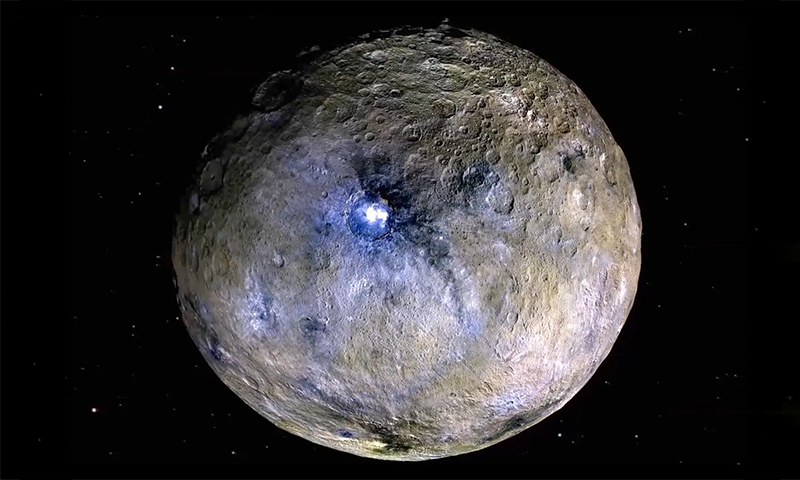Now Reading: Searching for Clues of Life on Ceres
-
01
Searching for Clues of Life on Ceres
Searching for Clues of Life on Ceres

Quick Summary
- Scientists are studying the dwarf planet Ceres, located between Mars and Jupiter, which may have once hosted a liquid water ocean and microscopic life due too a hot core.
- Research from NASA’s Dawn mission indicates internal heating from radioactive decay could have sustained hydrothermal activity billions of years ago.
- Dissolved gases like methane and carbon dioxide might have provided chemical energy for microbes resembling those found near Earth’s hydrothermal vents.
- Ceres is now cold and covered by a 30-mile-thick shell of ice, with little remaining energy for habitability. Its warmest period was estimated to be 4 billion to 2.5 billion years ago-around the time that life appeared on Earth.
- Findings were published in Science Advances by researchers led by Sam Courville at Arizona State University; new observations could expand knowledge about life’s origins in the solar system.
Indian Opinion Analysis
The study examining past liquid water oceans on Ceres holds notable scientific implications globally, including India’s space community working toward interplanetary research through future Chandrayaan missions or collaborations with NASA-led projects like Artemis Accord members. Exploring extraterrestrial habitability enhances planetary science while redefining humanity’s understanding of life’s conditions beyond Earth-a vital venture especially as nations seek celestial innovations-drive Technological Policy Experimental pathways























